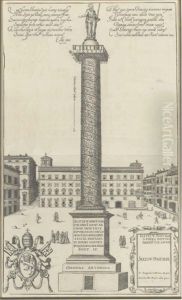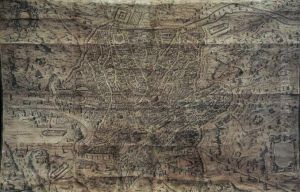Giovanni Giacomo De Rossi Paintings
Giovanni Giacomo de Rossi was an Italian engraver and printer, known for his significant contribution to the cartography and publishing business during the 17th century. Born in 1627 in Rome, Giovanni Giacomo hailed from the notable De Rossi family, which was instrumental in the production and dissemination of artistic and cartographic works across Europe.
De Rossi took over the family business, which had been established by his father, Giuseppe de Rossi, in the early 17th century. The family workshop, located at the sign of 'La Pace' in Rome, became a hub for artists, engravers, and cartographers. Giovanni Giacomo expanded the business, which became one of the most prominent publishing houses in Europe during that time, known as 'Gio. Jacomo de Rossi'.
The De Rossi firm specialized in producing a wide range of materials, including maps, atlases, religious iconography, and art prints. One of Giovanni Giacomo's significant contributions to cartography was the publication of the 'Mercurio Geografico,' a comprehensive atlas that featured detailed maps of various parts of the world. He also published 'La Geografia del Cluverio,' an atlas based on the work of the German geographer Philipp Clüver.
Giovanni Giacomo was not just a businessman but also a patron of the arts. He collaborated with many artists and engravers of the time, such as Giovanni Battista Falda, who was known for his detailed engravings of Rome. Together, they produced the 'Nuova Pianta et Alzata della Città di Roma' (New Plan and Elevation of the City of Rome), which depicted the city's urban fabric and architecture.
Under Giovanni Giacomo's leadership, the De Rossi print shop flourished, producing not only maps and atlases but also various religious and historical prints, which catered to the tastes and interests of both the Roman aristocracy and the broader European market. His works were widely distributed, influencing the visual culture of the time and contributing to the spread of knowledge and artistic styles.
Giovanni Giacomo de Rossi's death in 1691 marked the end of an era, but his legacy continued through his descendants, who maintained the De Rossi publishing house well into the 18th century. His contributions to art and cartography remain significant, and his prints and maps are still valued by collectors and historians for their beauty and historical importance.


